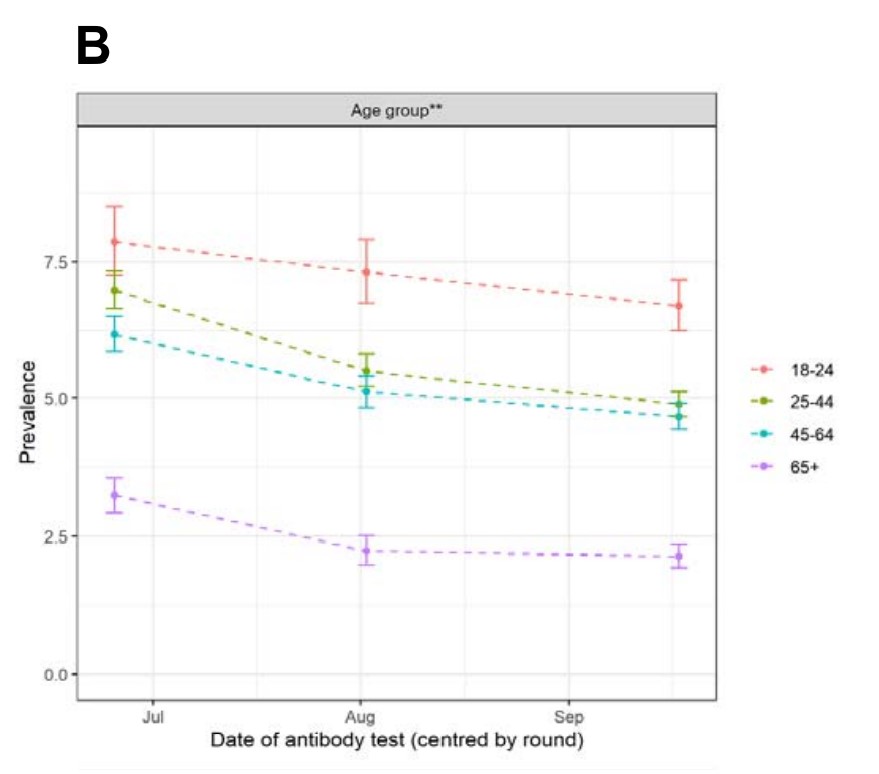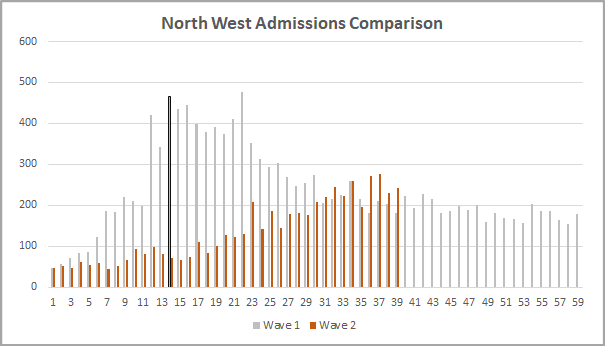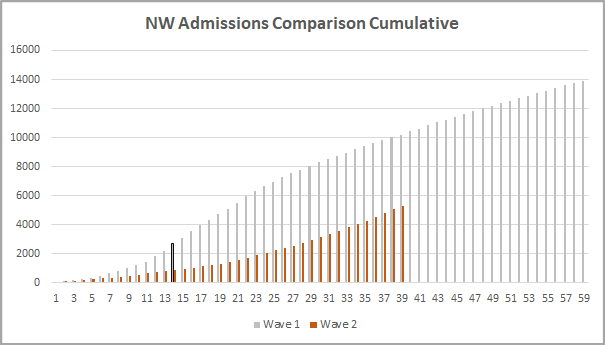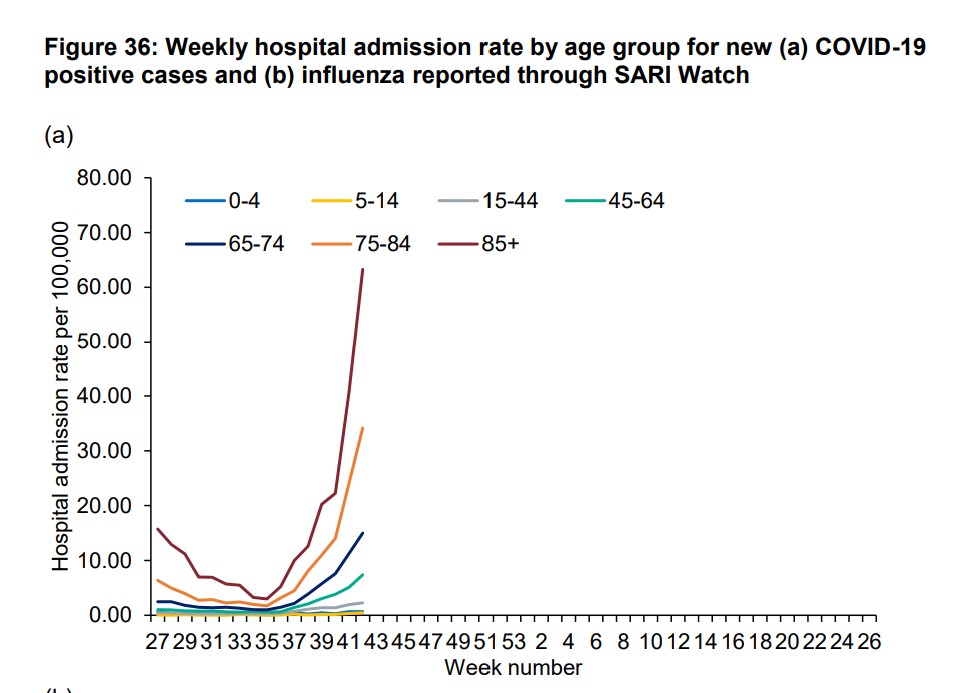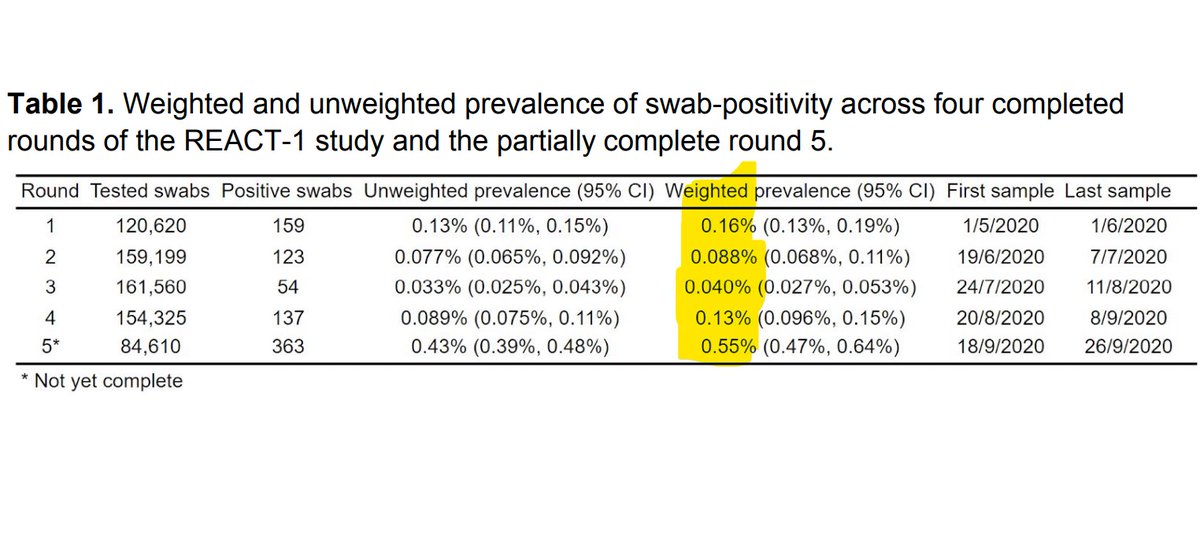
The interim report of Round 6 of @imperialcollege's #REACT study makes grim reading. It estimates 96,000 new infections a day, with an R of 1.56, and doubling every 9 days. Nearly 1m are estimated to be infected. Covering 16-25 Oct, it's very up to date. Here's some detail. 1/8 

Regionally, Yorks/Humber has overtaken the NW, consistent with admissions data @COVID19actuary has been reporting recently. Lower prevalence areas have higher growth rates, with R over 2, so there should be no complacency elsewhere, with short doubling times. 2/8 

Similarly for age, although 18-24 is highest the most rapid growth is now at older ages, with a threefold increase at 55-64, and doubling above 65. It's these groups which will be driving the increases in admissions we've already seen (and sadly, subsequent deaths). 3/8 

A busy slide that shows variations by several factors. The ethnicity divide appears to have lessened this time around, but deprivation and size of household remain important factors. All the detailed data is in the report tables. imperial.ac.uk/media/imperial… 4/8 

This slide highlights the ten-fold growth in just two months, and also the size of the survey. Remember it's an interim report, to get us results quickly, so this sample size is reduced. There's enough data though to be clear as to the trend. 5/8 

Some debate on social media last time as whether it was appropriate to smooth the R estimate over the previous round. This time the study is clear there is enough data to use the Rd 6 data alone, with no overlap of the CI's. Note even now the wide doubling time CI's though. 6/8 
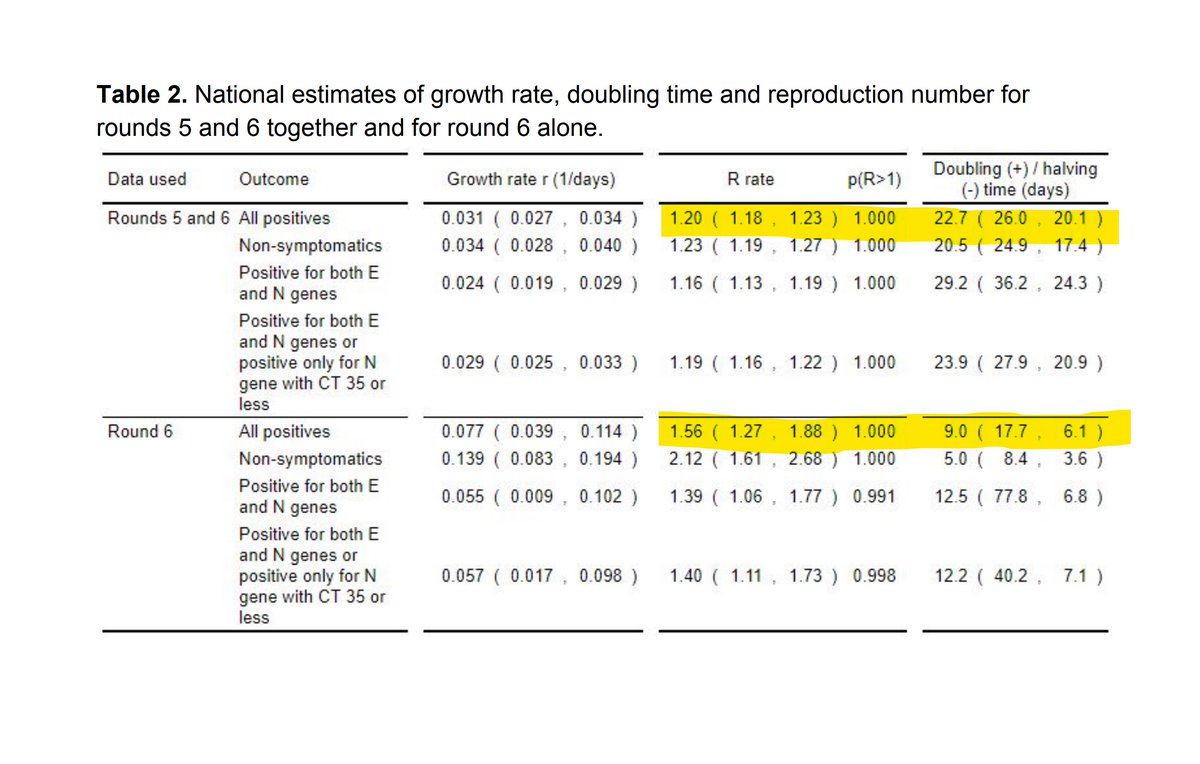
A sobering conclusion, which suggests that whilst it's been a slower rise, we are now at a critical point. There's a clear message that we need to get R below 1 rapidly. I'd add that should be across all areas, given rapid growth in lower prevalence areas. 7/8 

The extent and timeliness of this data is excellent - just 3 days to turn it around, and so continuing thanks to @imperialcollege, its many partner bodies, and all those involved in #REACT. Let's all take note and redouble our efforts to protect ourselves and others. 8/8 ENDS
• • •
Missing some Tweet in this thread? You can try to
force a refresh


